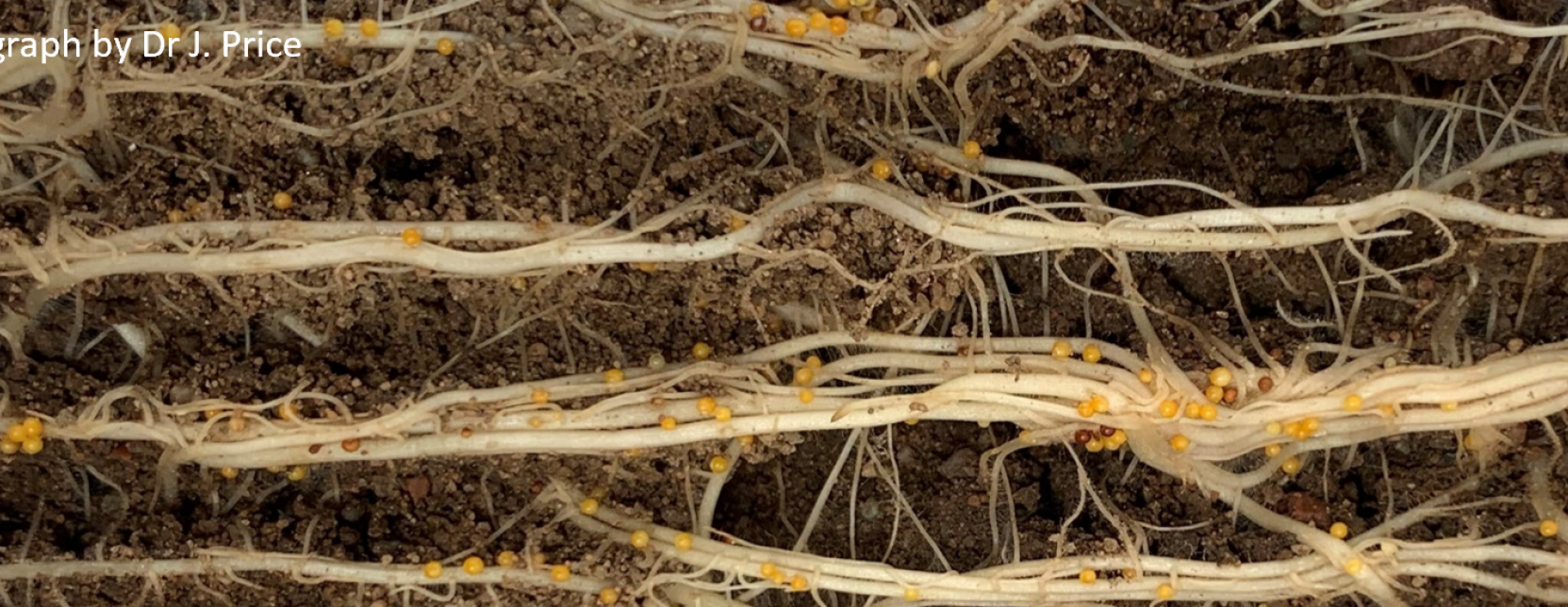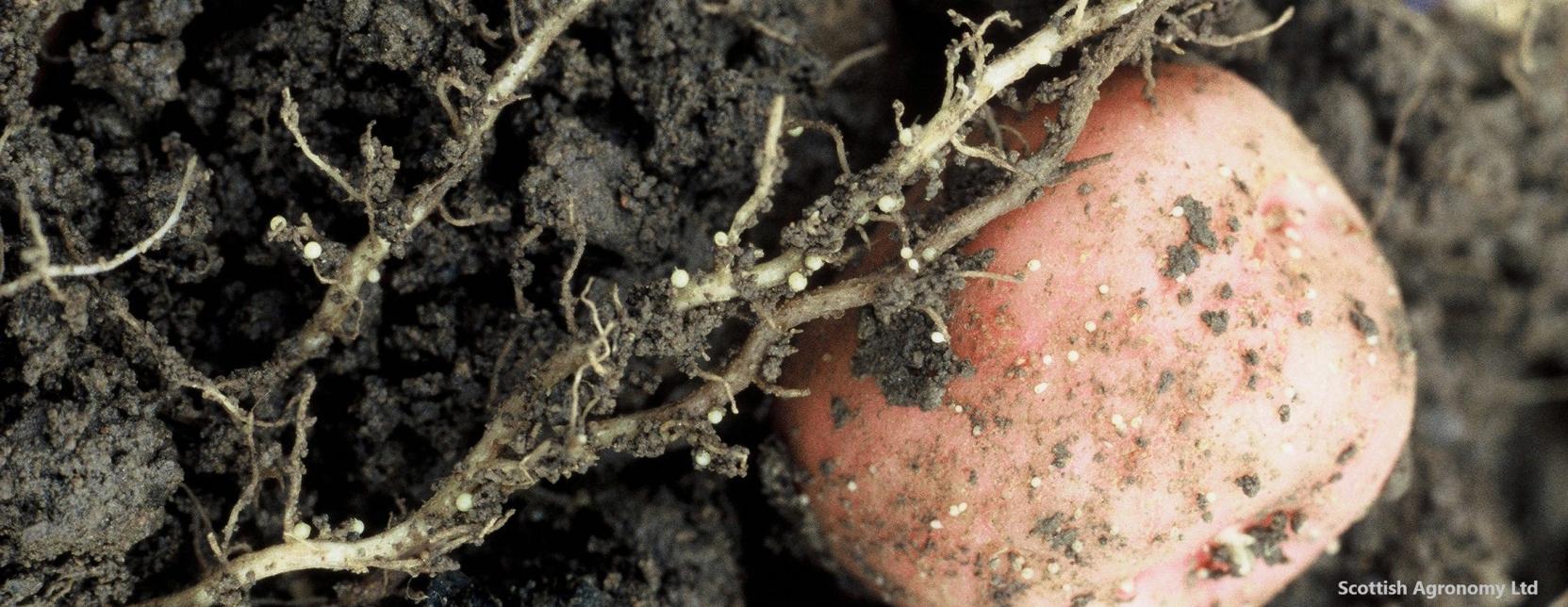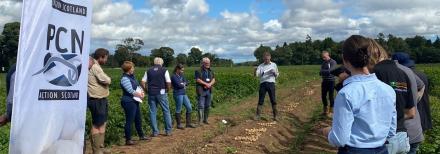-
 Potato Cyst Nematode Hub
Potato Cyst Nematode HubThe UK is the 5th largest potato producer and exporter in Europe with an industry worth ~£4.5 billion. Almost 80% of seed potatoes used in Great Britain originate from Scotland. The industry is under threat from potato cyst nematodes (PCN) which have spread across potato growing areas for decades. PCN drastically reduce yields and are incredibly difficult to control. Scottish legislation prevents seed potatoes being grown on land where PCN have been detected to reduce further introductions. However, PCN are already present in almost 21,000 ha of Scottish soils. Recent predictions suggest PCN will cause the end of the Scottish seed potato industry by 2050, potentially only 5 rotations away. If this happens, the UK potato industry will consequently collapse.
 Potato Cyst Nematode Hub
Potato Cyst Nematode HubDelivering a sustainable potato industry for Scotland through management of Potato cyst nematode (PCN).
-
Potato Cyst Nematode Hub
The UK is the 5th largest potato producer and exporter in Europe with an industry worth ~£4.5 billion. Almost 80% of seed potatoes used in Great Britain originate from Scotland. The industry is under threat from potato cyst nematodes (PCN) which have spread across potato growing areas for decades. PCN drastically reduce yields and are incredibly difficult to control. Scottish legislation prevents seed potatoes being grown on land where PCN have been detected to reduce further introductions. However, PCN are already present in almost 21,000 ha of Scottish soils. Recent predictions suggest PCN will cause the end of the Scottish seed potato industry by 2050, potentially only 5 rotations away. If this happens, the UK potato industry will consequently collapse.
-
Potato Cyst Nematode HubRead more
Delivering a sustainable potato industry for Scotland through management of Potato cyst nematode (PCN).
Latest Project Outputs
In 2023 a field trial was established which aimed to provide information on the integrated control of Globodera pallida. This report publishes the results of the field trial planted at Barnyards Farm on 02/05/2022 - a location with a moderate-high PCN population. The trial consisted of 8 potato varieties (Maris Piper, Elland, Eurostar, Buster, Amanda, Karelia, Lanorma,…
Latest NewsView All News
PCN Action Scotland Feature on The One Show!
Our segment with Chef Hasan ‘Big Has’ Semay covers PCN, why its an issue for the potato industry, and resistant varieties!
Watch at: https://bbc.co.uk/iplayer/episode/m0023hs8
A big thank you to all project partners and funding received from the Scottish Government.
Latest PublicationView All Publications

The PCN Action Scotland field trial 2023 report - A field trial investigating the resistance and tolerance characteristics of eight potato varieties to Globodera pallida in Scotland
In 2023 a field trial was established which aimed to provide information on the integrated control of Globodera pallida. This report publishes the results of the field trial planted at Barnyards Farm on 02/05/2022 - a location with a moderate-high PCN population. The trial consisted of 8 potato varieties (Maris Piper, Elland, Eurostar, Buster, Amanda, Karelia, Lanorma, and Paradox) with varying levels of resistance to both G. Pallida and G. Rostochiensis. Replicates of each variety were treated with either Nemathorin 10G (30 kg/ha, a.i. Fosthiazate), Velum Prime (0.625 L/ha in furrow a.i. fluopyram), or left untreated.
Sign up for our newsletter
Sign up for our Newsletter and to be kept informed about Centre activities:
Our Next Event
The FINAL PCN open day at Barnyards Farm, Tannadice will be held on the 7th of August 2024!
Click to sign up here!
An open day at Barnyards farm in Tannadice, Angus to discuss potato cyst nematodes (PCN) and current field trials investigating new control strategies. Session topics include, but are not limited to:
· Potato variety resistance and tolerance trials
· Oil radish variety trials
· Decision support system updates
· Policy discussions with SASA
· Live sprayer demonstrations targeting groundkeepers
There will be two sessions: morning (11-12:30pm) and afternoon (1:30-3pm). For each session there shall be a tour around the oil radish trial site, potato variety demonstration, discussions on the current state of PCN in Scotland, and updates from invited speakers (members of PCN Action Scotland Group) on research being done in the field.
*The afternoon session is a repeat of the morning session so you do not need to sign up for both.



